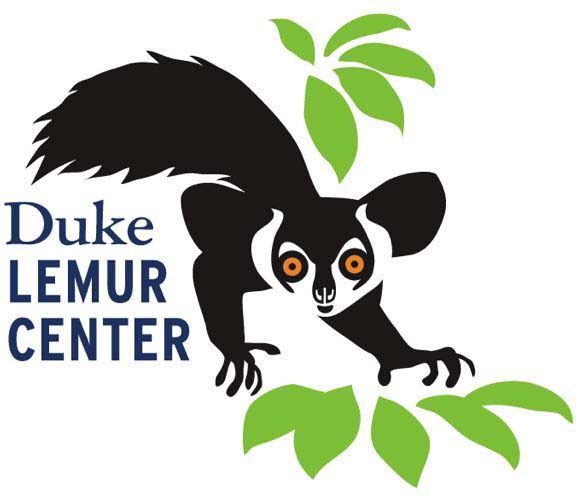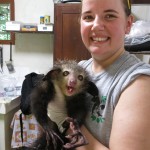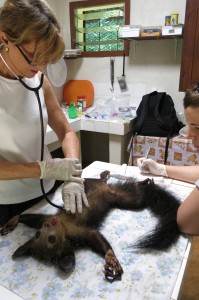
Veterinarian Cathy Williams (left) and primate technician Julie McKinney (right) examine a rescued aye-aye at Parc Ivoloina in eastern Madagascar.
April 14, 2014 — On the evening of March 15, 2014, in the rainforests of eastern Madagascar, a veterinary team from the Duke Lemur Center made an unusual house call.
Their patient was a female aye-aye — a rare and otherworldly primate with rodent-like teeth, wiry fur, big ears, bulging yellowish-orange eyes and a bushy tail.
She was one of five aye-ayes rescued by Malagasy researchers from a remote village after being illegally taken from the wild.
Aye-ayes are currently listed as “endangered” by the IUCN, partially due to a local superstition that the animals are evil omens and must be killed on the spot to avoid bad luck.
The researchers found the animals crammed in wire cages, underweight, and suffering from numerous cuts and scrapes. Following the advice of Madagascar’s wildlife authorities, the aye-ayes were taken to a nonprofit nature center called Parc Ivoloina for medical treatment and rehabilitation.
Within days of the animals’ rescue, the Duke Lemur Center, the San Diego Zoo, and a conservation nonprofit called the Madagascar Fauna & Flora Group pulled together funds to send Duke Lemur Center technician Julie McKinney to Madagascar for two weeks to provide emergency aid to the animals.
Madagascar is the only place where aye-ayes live in the wild. But with less than 10 aye-ayes in captivity on the island, and fewer than 50 in zoos and other institutions worldwide, every bit of shared knowledge about how to house and care for them is a help.
The first aye-aye born in captivity was born at the Duke Lemur Center in 1992. Since then, the center has cared for dozens of aye-ayes, and now manages more than a third of the world’s captive population.
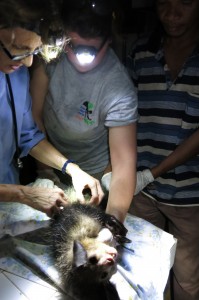
With no electricity at Parc Ivoloina, the team worked by the light of their headlamps until well after midnight trying to stabilize the sickest aye-aye — an adult female with a young infant.
Working alongside Duke Lemur Center veterinarian Cathy Williams, McKinney’s first priority when she arrived was to gauge the extent of the animals’ injuries. On the first night the team worked with no electricity and by the light of their headlamps and until well after midnight trying to stabilize the sickest one — a mom with a young infant.
She was weak, dehydrated and severely underweight. Her eyes were sunken and she had multiple wounds under her matted fur.
After three days of hands-on medical treatment Dr. Williams left Parc Ivoloina, while McKinney stayed on for another two weeks to work with park staff and monitor the sick female’s condition.
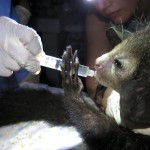 McKinney and the Ivoloina animal keepers gave her antibiotics and IV fluids, and fed her coconut juice and smooshed avocados by hand twice a day for a week. But in spite of their best efforts they were unable to save her. “Even if we’d had access to the best tools and medicines I don’t think she would have made it,” McKinney said. “Her injuries were too great.”
McKinney and the Ivoloina animal keepers gave her antibiotics and IV fluids, and fed her coconut juice and smooshed avocados by hand twice a day for a week. But in spite of their best efforts they were unable to save her. “Even if we’d had access to the best tools and medicines I don’t think she would have made it,” McKinney said. “Her injuries were too great.”
The goal for the rest of her stay was to help the park staff grow more comfortable handling, feeding and caring for the remaining survivors on their own.
“The language barrier was tricky,” McKinney said.
Another challenge was the weather. It was the wettest time of year in eastern Madagascar, a region that receives nearly 20 inches of rain in March alone.
“It poured almost constantly,” McKinney said. “Some days the animals wouldn’t even come out of their nest boxes.”
The next task was to find a suitable companion for the orphaned infant — a six-month-old male the park staff named Radama, after a one-time king.
“Adult aye-ayes are solitary animals in the wild, but infants in captivity will stay with their mom until they are two or three years old,” McKinney said. “The orphaned male is too young to be kept by himself.”
Gradually they began to introduce him to another of the rescued aye-ayes, a three to five-year-old female named Sahavalaina.
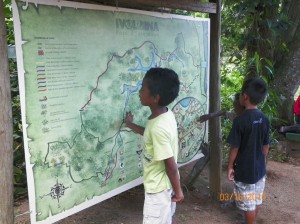
Located on 700 acres near the seaport town of Toamasina, Parc Ivoloina has partnered with the Duke Lemur Center since 1987, when Duke husband and wife team Charlie Welch and Andrea Katz began working with Ivoloina staff to develop the park into a nationally recognized center for conservation, captive breeding and environmental education.
It will be some time before the animals’ future role in the conservation of the species can be assessed — a decision that will involve input from Madagascar’s Department of Environment and Forests, the Duke Lemur Center, the Madagascar Fauna & Flora Group, the San Diego Zoo, and the Aspinall Foundation, the wildlife conservation charity that co-sponsored the rescue mission.
Until then, Radama and his aye-aye companion Sahavalaina will be looked after at Parc Ivoloina and hopefully will continue to thrive there.
“It takes an aye-aye a long time to learn to be an aye-aye,” McKinney said. “Hopefully she will help teach him.”
Adopt an aye-aye
Help aye-ayes in captivity and their counterparts in Madagascar. By ‘adopting’ an aye-aye, you can help other Duke Lemur Center technicians like Julie McKinney go to Madagascar to share their expertise in the care and management of aye-ayes, and also support efforts to bring Malagasy collaborators to Duke. Learn more about ways to give: https://www.gifts.duke.edu/lemur_share
–Contributed by Robin Smith, science writer at the Duke Lemur Center
